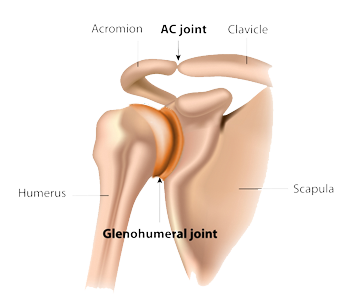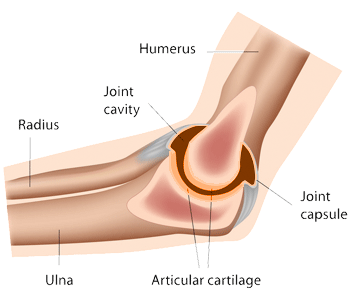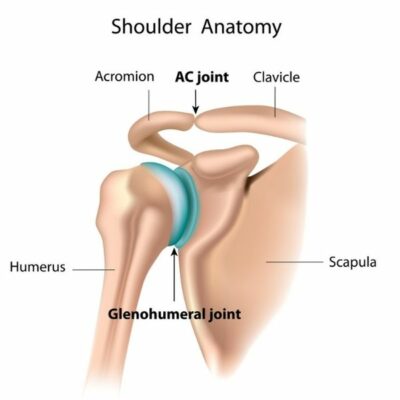Shoulder Separation Repair Surgeons
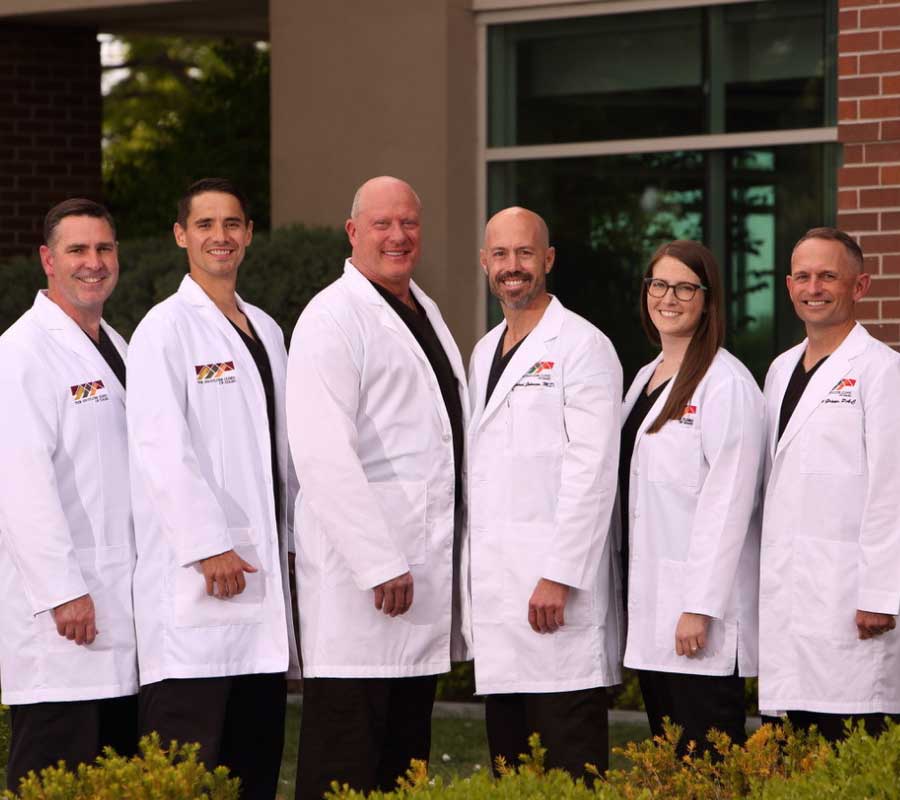
Are you an athlete who participates in contact sports? If so, you may be at risk of sustaining an AC joint injury, or a separated shoulder. Injuries to the AC joint are quite common in the athletic population. The shoulder separation repair surgeons at Shoulder Clinic of Idaho perform diagnosis and both surgical and nonsurgical treatment options for patients in the Boise area who have sustained a separated shoulder. Contact the Shoulder Clinic of Idaho team today!
What is an AC joint separation?
The acromioclavicular joint, or AC joint, is located on the top of the shoulder, where the clavicle (collarbone) attaches to the roof of the shoulder, called the acromion. An AC joint separation is also known as a “shoulder separation” or “separated shoulder”. The AC joint is easily found by feeling the bump on the top of the shoulder. This area is stabilized by ligaments that connect the collarbone to the front of the shoulder blade (scapula). Multiple ligaments help provide support to the AC joint, including the coracoclavicular (CC) ligaments and the coracoacromial (CA) ligament.
Direct trauma to this area, such as a football tackle, falling over the handle bars on a bike or an automobile accident, can disrupt these connections, separating the collarbone and the roof of the shoulder, so they are no longer sitting next to each other. This is called an AC separation and leads to the clinical appearance of the collarbone appearing elevated. In reality the collarbone, or clavicle, is not elevated in a shoulder separation, but rather, the arm is depressed by the weight of the arm and gravity, and the collarbone remains in its anatomic position. The collarbone can often be felt at the top of the shoulder. To correct this problem, new ligaments must be reconstructed to “re-suspend” the arm to the collarbone such that the roof of the shoulder (the acromion) re-aligns properly with the collarbone (clavicle). The orthopedic shoulder specialists at The Shoulder Clinic of Idaho have been treating AC joint separations successfully for patients in Boise, Meridian, Nampa, and the surrounding communities of the Treasure Valley, quickly returning them to their active lifestyles.
What is the difference between AC joint Separation (also known as a shoulder separation) and Shoulder Dislocation?
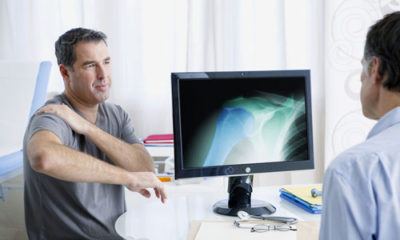 AC shoulder joint separation and shoulder dislocation both involve bones in the shoulder moving too far away from each other; either partially or completely out of place. The key difference is the location within the shoulder where the ligaments are partially or completely torn. Shoulder separations occur to the AC joint involving the acromion and clavicle; whereas, shoulder dislocations occur to the glenohumeral joint involving the humerus and the glenoid.
AC shoulder joint separation and shoulder dislocation both involve bones in the shoulder moving too far away from each other; either partially or completely out of place. The key difference is the location within the shoulder where the ligaments are partially or completely torn. Shoulder separations occur to the AC joint involving the acromion and clavicle; whereas, shoulder dislocations occur to the glenohumeral joint involving the humerus and the glenoid.
The AC joint and the glenohumeral joint are two primary joints of the shoulder. The glenohumeral joint is where the humerus (upper arm bone) connects with the glenoid (shoulder socket). The acromioclavicular joint (also known as the AC joint) is where the roof of the shoulder (the acromion) connects with your collarbone (the clavicle). When the humeral head of the glenohumeral joint (the ball of the ball and socket joint) comes out of the socket either partially or completely, this is known as a shoulder dislocation. If the injury occurs to the AC joint such that the roof of the shoulder (the acromion) no longer aligns well with the collarbone (clavicle) it is referred to as a shoulder separation.
Why would I need AC joint reconstruction?
The orthopedic shoulder surgeons at The Shoulder Clinic of Idaho measure AC joint injuries based on grades. Grade 1, 2, and 3 acromioclavicular injuries will cause pain and deformity. These AC separations are commonly caused by a sprain or the stretching of the ligaments. Grades 4 through grade 6 AC injuries typically mean the ligaments have been stretched or torn to a larger degree, and an AC joint reconstruction procedure will be needed to alleviate chronic shoulder pain and weakness.
AC Joint Reconstruction is often indicated for severe AC joint separations that cause instability, muscle fatigue of the deltoid and trapezius, scapular instability, and painful popping or arthritis due to the injury. The most common surgical options offered to patients in Boise, Meridian, Nampa, and the surrounding communities of the Treasure Valley include anatomic coracoclavicular ligament reconstruction. The goal of AC joint reconstruction is to realign the CC ligaments to their native anatomic locations so that they may heal correctly and by re-enforcing their strength with additional ligament and tendon tissue.
How is AC Joint reconstruction done?
AC joint reconstruction for recurrent shoulder separations involves reconstruction using a tendon graft (called an allograft) with mechanical fixation to further secure the new tissue in the anatomical location of the torn ligaments. The orthopedic shoulder specialists at The Shoulder Clinic of Idaho perform AC joint reconstruction in a minimally invasive manner on an out-patient basis. The goal of the shoulder surgery is to re-suspend the arm back to the collarbone in its normal anatomical position by using strong sutures and new ligaments securely attached to the front of the shoulder blade and to the collarbone. Reconstruction of the CC ligaments, using a donated graft, requires placing this new tissue in a looped fashion from the front of the shoulder blade to the top of the collarbone. The graft is protected during the healing process by using strong medical suture material secured through screws to add strength to the reconstruction.
What is the recovery time following AC joint reconstruction?
Patients are asked to wear a sling for several weeks to protect the healing AC joint. Full range of motion and strength is re-established with the help of special exercises. After the ligaments have healed, patients will be allowed to use strengthening exercises and be able to discard the arm sling. Patients are allowed to return to sporting activities and unrestricted work following successful healing of their shoulder surgery.
If you have experienced a shoulder separation or would like more information on AC joint reconstruction please contact the orthopedic shoulder surgeons at The Shoulder Clinic of Idaho, serving patients in Boise, Meridian, Nampa, and the surrounding communities of the Treasure Valley.

